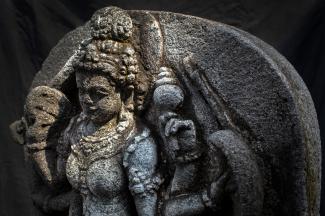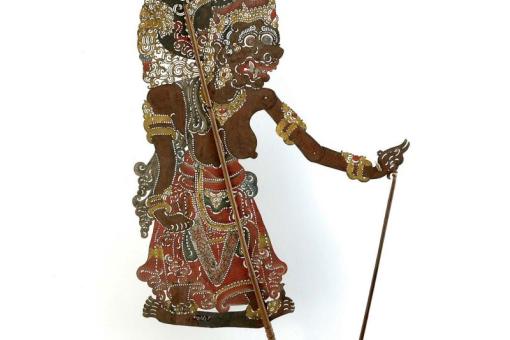This statue of the Goddess Durga was made in the 8th century CE and originates from central Java near the Prambanan temple. The Goddess is depicted as a figure standing on the back of the mahesa (bull), her eight hands each holding a divine attribute.
Historically, Durga was one of the most popular goddesses of Hinduism in Indonesia, especially on the island of Java. Many stone statues of Durga dating from the 4th to the 12th century have been found, and the Goddess was also depicted in reliefs carved into temples. Durga’s popularity has continued to this day and she is represented in folklore in Java and Bali, including in shadow puppet (wayang) performances.
Durga’s many faces
In the Hindu-Buddhist period, Durga was often interpreted as a strong and elegant woman; however, this portrayal has shifted over time. From the 12th century, popular stories began to associate her with the underworld while in the wayang, the Durga puppet is portrayed as a woman of bad character.
The changes in Durga's depiction are likely influenced by changing perceptions in Javanese society towards strong female characters. Initially, these may have embodied a beautiful, mighty goddess, but then slowly transformed into a more threatening figure. This transformation of views may show how a change in society can affect material culture and the characterisation of a female deity.
Curators from Museum Sonobudoyo share the significance of the Durga statue held in the museum’s collection.




